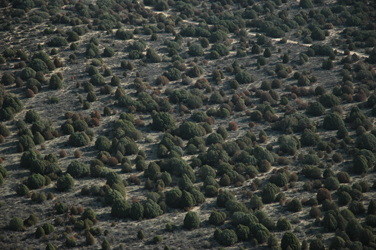The effects of an extreme climatic event on shrub species were assessed by analyzing their leaves, roots, seeds and stem. In 2005, very low temperatures were recorded during winter (-6 ºC) together with the lowest historical rainfall annual record (217 mm). Both situations of climatic stress dramatically affected the plant communities of the Doñana Monte Blanco's ecosystem, despite being a plant community specially adapted to summer drought. The long-term monitoring of scrub communities allowed to evidence the effects of this extreme event by monitoring the permanent network of plots sampled annually and the remote sensing images. The results showed, first, that not all scrub species respond in a similar way showing a wide gradient of affection. Secondly, these differences are clearly in relation to the various functional traits of the plants. The 2005 drought reduced the vegetation cover by 50 percent for three of the most common species. The figure is alarming considering that these scrubs are specially adapted to drought. After six years, the species composition varied slightly but the vegetation cover was restored almost completely. In general, the Doñana community scrub was shown as quite resilient. Plant species with roots of higher density and diameter are generally more conservative, less wasteful in the water use at the expense of having a slower growth. Species having sclerophyll leaves and roots show up as a recurring strategy among Mediterranean woody species to combat the shortage of water and nutrients. informacion[at]ebd.csic.es: Lloret et al (2016) Climatic events inducing die-off in Mediterranean shrublands: are species' responses related to their functional traits? Oecologia DOI 10.1007/s00442-016-3550-4
http://link.springer.com/article/10.1007%2Fs00442-016-3550-4








 Las altas temperaturas están provocando que las lagunas y las marismas de Doñana pierdan agua rápidamente
Las altas temperaturas están provocando que las lagunas y las marismas de Doñana pierdan agua rápidamente



